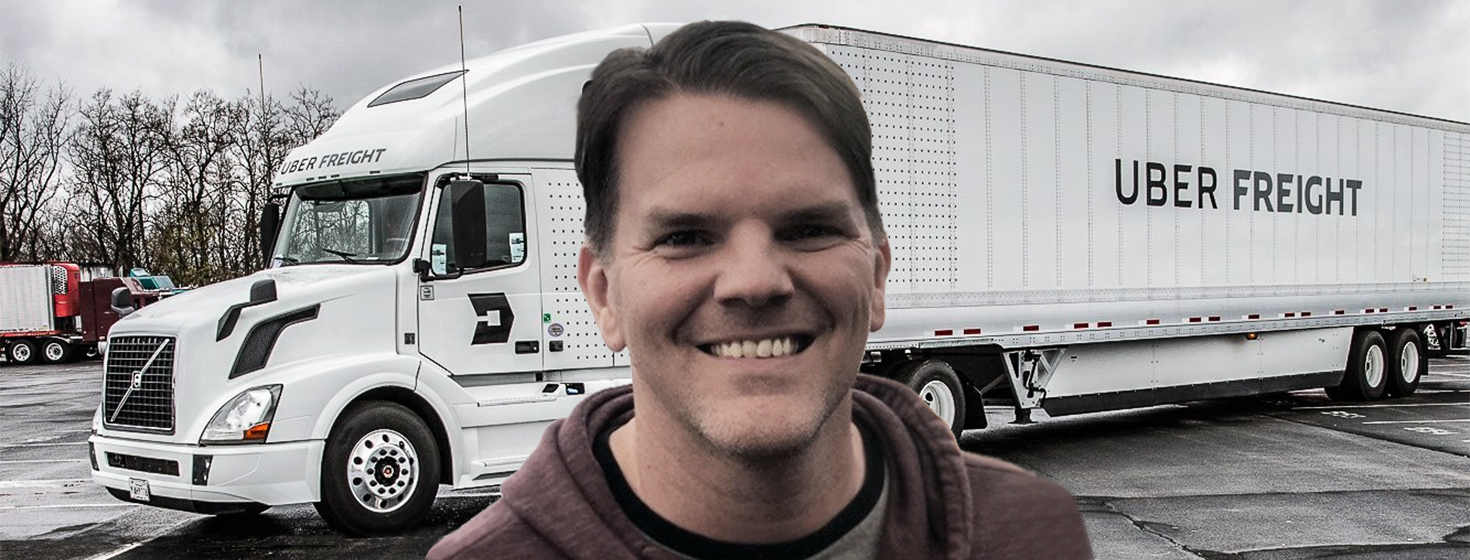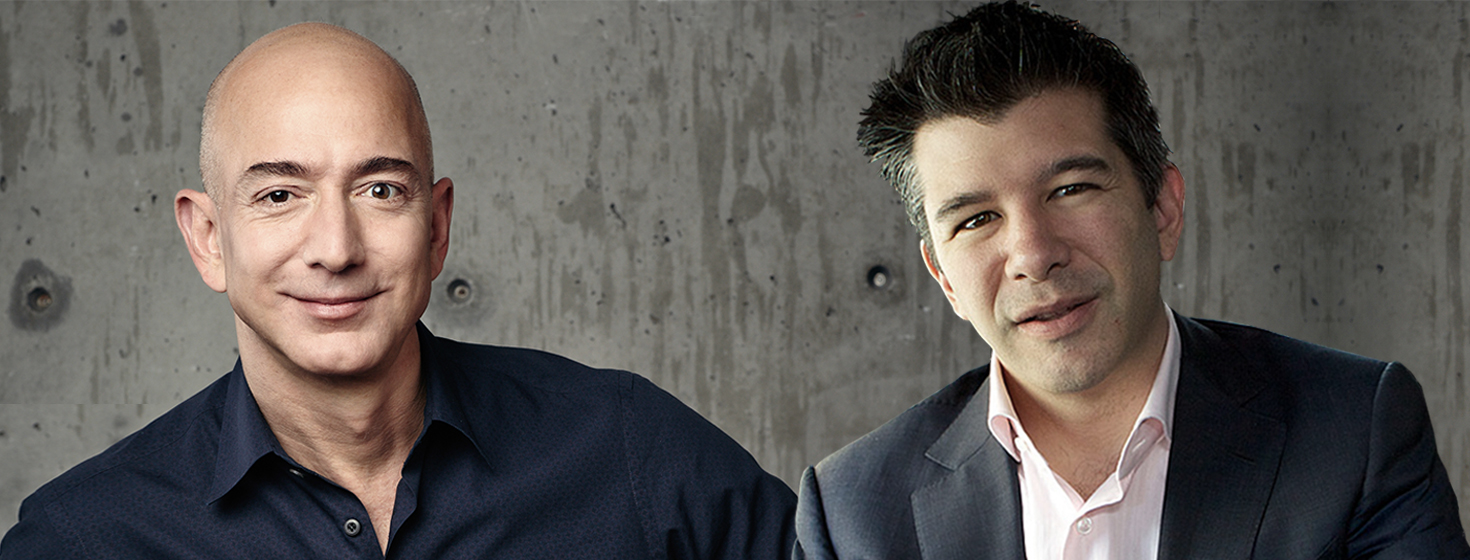Questions & Answers with Bill Driegert, director of Uber Freight

Logistics Management Group News Editor Jeff Berman caught up with Bill Driegert, director of Uber Freight, earlier this month to discuss topics such as the freight transportation market, driver shortage, regulations, and truck capacity.
During a wide-ranging conversation, Uber Freight's Bill Driegert, director of Uber Freight, offered up insights on the company's approach to a competitive market, the impact of the driver shortage and regulations, and where things may go from here.
More SC24/7 on Uber Freight
The following is a transcript of the conversation between Logistics Management's Jeff Berman and Bill Driegert.
How are companies like Uber Freight approaching current market conditions, specifically as they relate to tight capacity?
Whenever there is a big capacity crunch, it has created increased opportunities for intermediaries, as shippers are looking for options.
Typically, intermediaries are the ones most well suited to find capacity at the last minute and to access that capacity.
Uber Freight is taking that a step farther. We want to make the transaction and access to capacity be as seamless and as fast as possible by accessing drivers almost instantaneously.
We don’t have to pick up a phone and call them. It is a much [quicker] transaction.
How does this work on the pricing side?
All of our prices are transparent so we are the only provider in the truckload market with 100% transparency with any of our drivers and carriers that log in so they can immediately see what the execution price is…and what that allows for us to be more faster and more elastic in how we go to market.
We can blast out to our carriers seamlessly and tell them exactly what we have. This removes the need that, for many providers, requires a series of phone calls, which requires a lot more touch points.
When shippers enter into our network, they can immediately access all of these carriers instantaneously.
How does surge pricing factor into this?
Within truckload, we have a whole different approach to pricing that is much more market-driven within the freight markets. So, our prices are very much set by what is happening in the market, and it is a very competitive market so they are competitive with other providers.
Ultimately, because our model is so much speedier it gives us access to carriers earlier, and we are often the first place they look because they don’t have to call or negotiate with anyone. It makes the experience better for them.
Going back to Uber Freight’s formal entrance in the market to now, nearly a year later, what are some of the things in the market that have changed or remained the same over that period? Also, how has the market reacted to Uber Freight’s entrance into what is a crowded and competitive field?
Since launching, I think we have had strong success with customers in telling our story and proving through execution how we can make their [operations] more efficient. We have had a lot of success over the last year, and I would say that this is an exceptional market.
It is the tightest market I have ever seen since 2006. With that, comes a lot more interest from customers, as they are asking themselves what they need to do to be more efficient and determining what services are the ones worth buying.
Secondly, given all the volatility in the market and accounting for the impact of ELD and some capacity shortages earlier in the year, the combination of those factors definitely changed how customers think about going to market. For us over this time, it was very much about growth and improvement on the model as we went to market.
We are still a small percentage of the market, and it will take more growth more growth before we become a significant part of that total. We have been able to begin to start working with some of our larger customers in the market.
Looking at ELD, the soft enforcement period ends on April 1. What have you seen since the December 2017 rollout of ELD in terms of its impact on the marketplace as it relates to your business? Has it been a drag on things or perhaps helped?
With total enforcement starting in April, what we are seeing on a lane-by-lane basis that some lanes are not impacted and other lanes that are right on the edge of what could be a 1- or 2-day run it is not as clear. As this plays out, what I think we may see is that certain lanes may be impacted more than others, and we don’t know exactly what that impact might be.
By the fall, we should have a better sense of what things look like in the market as it relates to ELD. We certainly are seeing an impact on certain lanes, and we are seeing drivers being more conscious of their hours to make sure the times work.
For us, we have been working with our shippers to make sure those lanes attractive to our drivers and making those loads attractive and that they are able to work within their hours.
There is no shortage of players in this market. How do you view the competitive landscape?
We are familiar with the many players out there and what they bring to the table. Uber Freight is unique, and I think we bring a deeper depth and technological capability, exceptional operating ability and resources that our competitors would not have access to.
And as a result, I think we have the most sophisticated marketplace, and our approach is unique because it is real-time with fixed prices, and it is unique in its access to capacity. It is very difficult for a lot of our competitors to replicate what we have unless they build it from scratch, and that is the advantage we have.
We are in it for the long haul, and are very driver-centric, as it is all about empowering the drivers, making them more efficient, and improving their revenue. That makes it a compelling product for shippers because they know they have immediate access to this high-quality driver pool. That was very much our focus early on, and all of these things have a big impact.
There are many challenges in the TruckLoad (TL) market, whether it is the driver shortage or lack of available capacity, among others. What are the biggest challenges these things present, especially on the driver side?
Smaller carriers have a hard time currently operating in the market. And that is why we have been so focused on drivers, as our success hinges on their success, and it is critical that we build tools and a platform with them in mind.
We are very careful in how we view the market and try to make it better for them. It can be very hard for an owner-operator to get access to good freight, and with what have built provides for a more seamless, easier and more transparent transaction. We think this provides drivers with better opportunities.
A lot of the capacity challenges in the market are due to driver churn, with some drivers leaving larger carriers and try to go on their own, but find they no longer have direct access to that good freight and instead need to go through intermediaries. Our objective is to make this a more stable market for small carriers and those individual drivers that come into the market.
How does Uber Freight match up with traditional brokers as it relates to business on a transactional level?
Some differences we have are things like transparency, the lack of rate negotiation that a traditional brokerage would have with their drivers, as well as transparency with shippers.
We want to be a transparent, real-time partner, as anyone logging into our system can see prices for any given load at which point they can determine if that works for them or not.
Nobody else offers that, and it a small but pretty significant difference for the driver and carrier experience as to what they see in the market. A shipper also would not typically be able to see what a broker was executing at, too.
How do you view the truckload market between now and the end of 2018 from an Uber Freight perspective?
With the capacity situation that is brought on by ELD and the driver shortage to a large degree, we think it creates an opening in which we think Uber Freight is well positioned. 2017, for us, was about building our foundation and initial relationships with shippers and carriers.
And for 2018 we are well-positioned to be active in the market. It is a great opportunity for us go out and demonstrate the value of what we have built. We are seeing freight move off our platform and more engagement from drivers that are using it every week, and from shippers we are seeing increased interest in how we reach the market and plug in deeper to their operations with real-time access.
It is a unique time in the market, and it is creating a lot of opportunities for how they run operations and go to market.
Read: Amazon vs Uber: Two Technology Giants Disrupting Logistics
Related White Papers
Transforming Supply Chain Strategy to a Global Trade Network Model
The technology to support a global trade network is available today, it’s just a matter of looking at supply chain design in a new way, implementing it, and moving global trade to the forefront where your supply chain becomes today’s battleground. Download Now!
Carrier Connectivity: The Critical Component of Transportation Management
In this white paper, we explore the value of building a transport management system on carrier connectivity, explain the difference between doing this yourself versus working with a vendor that has baked this connectivity into its solution. Download Now!
From the First Mile to the Final Mile New!
In this whitepaper, we discuss how technology is key to ensuring the efficient and effective movement of goods around the world and how transport management and shipping solutions need to combine with new mobile technology tools to ensure that every mile of the journey runs smoothly. Download Now!
More Resources from BluJay Solutions
Article Topics
BluJay Solutions News & Resources
5 Signs You May Need a More Modern Supply Chain Solution How Supply Chains are Becoming Resilient Amid Disruptions Supply Chain 2020 Innovation Update BluJay research focuses on the need to build resilient supply chains 5 Signs It’s Time to Modernize Your Supply Chain Technology Supply Chains of the Future Boost the Power of Your Trading-Partner Network More BluJay SolutionsLatest in Transportation
Talking Supply Chain: Doomsday never arrives for Baltimore bridge collapse impacts Amazon Logistics’ Growth Shakes Up Shipping Industry in 2023 Nissan Channels Tesla With Its Latest Manufacturing Process Why are Diesel Prices Climbing Back Over $4 a Gallon? Luxury Car Brands in Limbo After Chinese Company Violates Labor Laws The Three Biggest Challenges Facing Shippers and Carriers in 2024 Supply Chain Stability Index: “Tremendous Improvement” in 2023 More TransportationAbout the Author


















